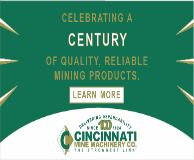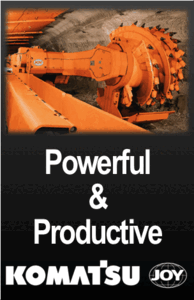
 











|
Signature Sponsor


September 18, 2023 - When Jamie Valdez was growing up on Pueblo’s east side in the 1970s, his family would head to the drive-in and pass the fresh slag heaps dumped outside the steel plant, glowing orange in the twilight of a long workday. At the time, he didn’t connect his childhood asthma to the carbon dioxide released from the mill as it turned iron into those molten blobs. Nor did Valdez link his respiratory problems then to the nitrogen oxide and sulfur dioxide and particulate pollution and ozone from the carbon-belching industries surrounding Pueblo, like so many torches. Comanche coal power plant, still sending 6.6 million tons of carbon dioxide skyward, annually. Pueblo cement plant, nearly 740,000 tons of carbon. Steel plant, more than 290,000 tons of carbon. Airport power plant, nearly 600,000 tons of carbon. Ray Nixon coal power plant near Fountain, 1.3 million tons of carbon. Fountain Valley gas power plant, just under 70,000 tons of carbon. Portland cement plant in Florence, another 680,000 tons of carbon. As Valdez stands on a hotter-than-normal 91-degree day at the place where the smokestacks of Comanche Generating Station meet the prairie, much of Pueblo’s carbon-heavy past and present is in sight: Coal heaps, cement kilns, steel forges. The sweat of climate change and 2.9 degrees of extra heat from global warming is on his brow. Colorado leaders say they can reconcile carbon’s century-long industrial assault on Pueblo citizens by capturing millions of tons of carbon dioxide and stuffing it underground in Pueblo, El Paso, Washington, Weld and other as-yet unnamed counties. A sequestration industry, they say, could create local jobs and send profits from State Land Board property to benefit public schools. The Land Board approved another carbon injection exploration lease Thursday, amid Weld County farming, grazing and oil production land. Where Valdez would like to tell them to stuff their carbon is unprintable, but “not here” will suffice. As a community organizer and as a member of a state-appointed environmental justice task force, Valdez helped shape recommendations saying that carbon capture and other modern industries should “not add more burdens to communities that have already been overburdened.” Whether hosting a drilling rig or a carbon sink 4,000 feet underground or a 30-mile high-pressure carbon pipeline, Valdez said, “Pueblo should just be off the table.” Burying Colorado’s industrial age under the PlainsThe scientists, engineers and policymakers who dominate Colorado’s official climate change reports and edicts say halting global warming means putting human-made carbon underground. Yes, coal-fired power plants must go away, this thinking goes. Yes, cars must switch to clean electric batteries. Yes, oil and gas producers leaking methane must clean up their act. But that won’t be enough, according to this theory. Not all fossil fuel use — some to power vehicles or to fire the devilishly hot kilns to make steel and cement — can be replaced by renewable energy. Some pockets of the U.S. or overseas nations won’t turn off their coal plants for decades. A percentage of carbon will have to be captured from power plants or straight out of thin air, and stored underground. Storage or a favored alternate word, “sequestration,” imply someone will remain in charge of locking away the carbon until our global trial is over. “Effectively all climate science models now agree that if we’re going to end up limiting global temperature rise, we need to go beyond deep decarbonization and also achieve some level of removing carbon from the atmosphere,” said Daniel Pike, who leads nonprofit energy researcher Rocky Mountain Institute’s (RMI) carbon removal initiative. Two primary technologies are emerging for carbon removal. Direct air capture sets up a vacuum-and-filter machine anywhere — one of the first is in Iceland, and another was announced in an industrial area of Adams County — and pulls the ambient carbon into filters. A small portion of captured carbon can be used for industry, to inject into fracked oil fields to push more petroleum out and up. That kind of reuse, not surprisingly, is frowned upon by environmentalists. Other possible uses for the extra CO2 include piping it into greenhouses to promote plant growth, or making dry ice for industry.
A second option is carbon capture, utilization and storage, or CCUS. It refers to grabbing carbon from large single-point sources, such as utilities or cement kilns burning fossil fuel, and then piping it to a dedicated underground well, permitted through a new Environmental Protection Agency review process. National geologic research shows Colorado, for the same reasons it holds massive oil reserves in deep stone-capped vaults, has places thought to be ideal for sequestering carbon. The same Biden administration and congressional acts producing hundreds of billions of dollars for clean energy are also dangling local incentives to create a carbon capture economy. Blue states like Colorado are joining with red states like Wyoming to pursue carbon capture “hub” status, which might land lucrative grants, tax credits and industry investment. On its own, Colorado won a $32 million U.S. Department of Energy grant to pay for a carbon capture test well somewhere in the southern part of the state. The grant and the research are managed by Colorado School of Mines, the Los Alamos National Laboratory and the private startup Carbon America. More recently, Colorado also won a separate $3 million DOE grant to promote studies and marketing for a potential direct carbon capture hub centered on Pueblo. School of Mines and state officials say they don’t want to place carbon in communities that don’t welcome the activity. But the slow-drilling machinery of official reports, enabling legislation and job incentives is lining up decidedly in favor of carbon domes growing under our feet. “It is important that CCUS be both enabled and appropriately regulated,” begins one summary in the state’s 2022 official assessment of carbon storage.
The future is already happening near Yuma and PuebloFountain Elementary School on Pueblo’s East Side is where Jamie Valdez walked the halls, occasionally wheezing from asthma. Fountain, now a district-run international baccalaureate magnet, has a state-sponsored air pollution monitor on-site measuring lung-choking particulate matter. Valdez and others are negotiating with state officials for grants to expand Fountain’s testing to volatile organic compounds and other toxins. Fountain Elementary and the neighborhoods around it have a high percentage of low-income kids disproportionately impacted by historic environmental injustice. It’s exactly the kind of place the State Land Board says it wants to help with the revenue that may come from going all in for carbon capture. The board manages millions of acres given to Colorado by the federal government in trust for public schools. The board, which also leases land and takes royalties for oil, gas and coal among other paid land uses like grazing and farming, has now approved three exploration leases for carbon capture on state land. Two went to Carbon America. (The collaborative including Carbon America that is managing the $32 million exploration in southern Colorado, at Chico Basin Ranch, is called Project Eos.)  
A well in Washington County, near Yuma, already has been drilled, as part of a deal Carbon America worked out with investors to put carbon from northeastern Colorado corn ethanol plants underground.
Private investors pay for the drilling and eventual storage setup, taking advantage of the $85 per ton of carbon federal tax credit allowed by the energy programs in the Inflation Reduction Act. Some industry estimates put the total cost of creating storage and capturing ethanol carbon, for example, at up to $55 a ton, leaving plenty of room for investor profit. The fact that a number of multinational oil companies are jumping into carbon capture is another point of fury for environmental groups, who note the same oil companies first profited from removing all the combustible hydrocarbons that have led to global warming. Bloomberg News has cited reports from Credit Suisse analysts and others estimating carbon capture entrepreneurs will reap up to $52 billion from the uncapped Inflation Reduction Act tax credits in the first 10 years. In setting up its lease protocols for carbon capture testing at public meetings over the past two years, the State Land Board split its approval process into two. Interested parties must first apply for an exploration lease on state land. If that work proves a geologic and financial basis for a storage site, and the plan passes local reviews, including environmental justice requirements, then the original drilling company or competitors can apply for an injection lease. The current Land Board contracts envision collecting fees that include $12 an acre in annual rent for the entire parcel, then about $2.50 a ton for the carbon injected to underground storage. Environmental groups have criticized the board in the past for agreeing to lower coal royalty rates on some properties in the name of supporting the local jobs economy. Climate change groups have asked the board to get out of fossil fuel leasing altogether, and say local economic development officials’ eagerness for projects should not override land protections. Land Board and Department of Natural Resources officials reject the argument that their approvals of a carbon capture framework and exploration leases indicate they will rubber-stamp actual injection leases impacting Colorado geology for decades. The Land Board staff often splits leases into two parts, each requiring detailed applications, staff reviews and public hearings, spokesperson Kristin Kemp said. Lease proposals can be rejected at any number of stages of progress: A staff-recommended solar farm lease in Arapahoe County was denied by the board after nearby farmers objected, Kemp said. “So the board as a group of people is comfortable with this model and the implications of that,” Kemp said. The Land Board does make significant revenue from fossil fuel extraction, state officials said, but the mission includes being a steward of all state resources in addition to raising money for schools. “Ten percent of the state’s solar and wind energy is produced on State Land Board land already,” Kemp said. While carbon capture advocates frequently emphasize that the current phase in Colorado is exploratory, with many future moments where turning back is an option, the momentum is as clear and polished as the Project Eos consortium web page. There, the state’s leading politicians and clean energy businesses tout Colorado’s potential as a carbon sink as “when,” not “if.” Carbon storage “has enormous potential as a climate solution, especially for difficult-to-decarbonize sectors, and as an economic growth engine for our state,” reads a joint quote from Colorado’s Democratic U.S. Sens. Michael Bennet and John Hickenlooper.
After the Yuma-area storage exploration drill, the second exploratory drill at the Land Board’s Chico Basin Ranch may present a louder test of the stewardship and environmental justice questions. The sprawling prairie property encompasses 86,000 acres straddling the line between El Paso and Pueblo counties, and is a working cattle and guest ranch, in addition to being a favorite of Colorado’s dedicated birding community. It currently has no oil and gas wells, positioned too far south of the petroleum-rich Denver-Julesburg Basin. The northern stretches of the ranch, where Carbon America is renting the land for carbon scouting, is an easy drive from Pueblo and Colorado Springs, and for the Denver-based groups that regularly weigh in on environmental justice and greenhouse gases. “It is imperative that we be mindful of how these projects are experimental, at the end of the day,” said Lorena Gonzalez, communities and justice campaign manager for Conservation Colorado. “And we need to be honest about the types of communities which we choose to experiment on.” Seeking a sandstone sponge with a hard capThe same features that made Colorado a national leader in taking carbon from deep underground are the ones that make us a prime proving ground for putting some of the carbon back in. The carbon capture formations being explored by Carbon America, the School of Mines and others are layers of porous sandstone that start thousands of feet below the topsoil. Carbon America said the Washington County exploration site shows a promising injection zone at about 4,800 feet underground, sitting beneath a 100-foot-thick layer of hard rock. In oil basins like the Denver-Julesburg, the sandstone holds oil and natural gas like a big sponge, capped above by layers of hard rock. Fracking tapped once-locked American oil fields by drilling down below the hard cap, then horizontally through multiple long shafts into the sandstone. Water and chemicals are then forced underground at enormous pressure, fracturing the sandstone in thousands of places and allowing the oil and gas to flow back into the pipeline-straw, and out. Carbon, shipped from sources miles away in aboveground or underground pipelines, will of course go the other direction. Down into the sandstone to stay, and monitored for years under EPA well rules. Scientists believe the gas would react with minerals underground to form solid carbonate rock, though basalt formations may have an advantage over sandstone.
Carbon America says it could store 50 million tons of carbon over 30 years in a promising well formation. Environmental groups who are less enamored of carbon capture and storage note that Colorado alone produces 125 million to 130 million tons of carbon in greenhouse gases every year. Even if the carbon stays underground, Gonzalez said, pipelines leak, pipelines rupture, and the state’s precious drinking water stores have been contaminated in other disasters, whether they come fast or slow. “It hasn’t been fully proven, and it comes with a big price tag that could be used to fund more tried and true decarbonization strategies that don’t come with as many risks to the community,” Gonzalez said. Carbon capture projects “are perpetuating slow violence” on the communities being promoted for the technology. RMI and other experts say past research and the EPA’s rigorous system for permitting carbon wells offer assurances sequestration can be done safely. One of the most prominent worldwide experiments so far is a direct air carbon capture project in Iceland. “Everyone feels like this is a very safe and necessary technology that is going to be developed over the next 10 to 20 years,” said Michael Turner, director of strategic initiatives and finance for the Colorado Energy Office, which is Gov. Jared Polis’ clearinghouse for electrification and greenhouse gas issues. “And it’s not a technology that we want to start using 10 years from now without putting any investment into it.” Some influential Coloradans express their doubts about solving the problems of past drilling in Colorado by drilling more in Colorado. |
 








|



